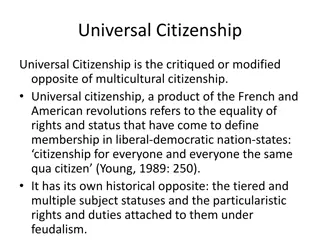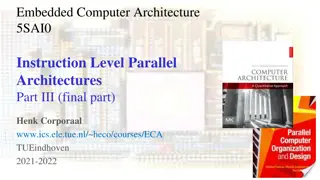Differentiated Instruction: Strategies and Implementation
Explore the concepts of differentiated instruction through various strategies like content, process, and product differentiation. Learn how to assess student readiness, interests, and learning styles to tailor instruction effectively. Discover the importance of pre-assessment and formative assessments in determining starting points for individualized learning. Differentiate learning by challenge, interest, and learning style to maximize student engagement and success.
Download Presentation

Please find below an Image/Link to download the presentation.
The content on the website is provided AS IS for your information and personal use only. It may not be sold, licensed, or shared on other websites without obtaining consent from the author. Download presentation by click this link. If you encounter any issues during the download, it is possible that the publisher has removed the file from their server.
E N D
Presentation Transcript
It seems overwhelming but, youre already doing it! Getting to know your students Projects Hands on activities Group work Using multiple levels of questioning (QAR) Varied assessments: Conferencing with students, written responses, graphic organizers, etc. Start small and just differentiate one aspect of your instruction to begin with.
The two simple charges of differentiation are: (1) do whatever it takes to maximize students learning instead of relying on a one-size-fits-all, whole-class method of instruction and (2) prepare students to handle anything in their current and future lives that is not differentiated, i.e., to become their own learning advocates. (Wormeli, 2007, pg. 9.) What differentiation is NOT: Requiring more or less work from students.
Differentiate: 1.Content- What is taught? The teacher offers varied curriculum materials. 2.Process- How it is taught? The teacher varies the learning activities based on student learning styles. 3.Product- How learning is assessed? The teacher gives students a choice as to how they will demonstrate what they have learned.
Differentiate based on: Student readiness what concepts, skills, or strategies are they ready for based on their foundation. Student interest student interest inventories Student learning styles visual, auditory, tactile/kinesthetic, multiple intelligences, etc.
You need to determine a starting point There is no sense to spend time teaching them what they already know! Pre-assessment / Formative assessment can be: Student/Teacher Conferences K-N-W Chart (What do I know, need to know, want to know?) Journal writing Concept map Textbook pretest Fist of 5 Windshield (Clear, Buggy, Muddy)
Differentiate Content By challenge: Leveled reading allows everyone to read at their own level. Newsela: https://newsela.com/ Shell Education: http://shelleducation.com/ By interest: Use to group for exploratory topics. By learning style: Used to create partnerships and learning groups.
Differentiate Processes Initial whole group instruction Graphic Organizers Think Alouds Anchor activities Meaningful assignments tied to content that students are working on independently. Frees up the teacher to rotate through groups. Tiered Instruction Create your on level tier. What do you want students to know, understand, and do? Design a task for struggling learners. Design a task that requires higher level thinking skills for students who have already mastered the task. Flexible grouping Gives students a chance to work with a variety of peers Keeps students from being labeled as high or low Groups can be designed based on challenge levels, interest, or learning style.
Differentiate Products (Reports, Projects, Speeches, Skits, Video, Brochure, etc.) Tic Tac Toe Create a Tic Tac Toe board with different activities in each square. Have students complete any 3 in a row. Cubing Each side of the cube has an element such as: describe, analyze, compare, etc. Students roll the die/cube 3 times and complete activities. Can be used with math problems. Menu Create a menu with appetizer, main dishes, side dishes, and dessert activities. The main dish is the anchor activities that everyone is required to complete. Appetizers and side dishes are negotiable but students are required to complete at least 2 side dishes. Dessert activities are optional but should be high interest and challenging. Differentiated Menu Example Choices Board Like the above, a variety of activities are on board and students have to choose a certain number to complete.
Remember, chances are you are already doing some of this. Start small and just continue to increase differentiation in your classroom. Have fun!























